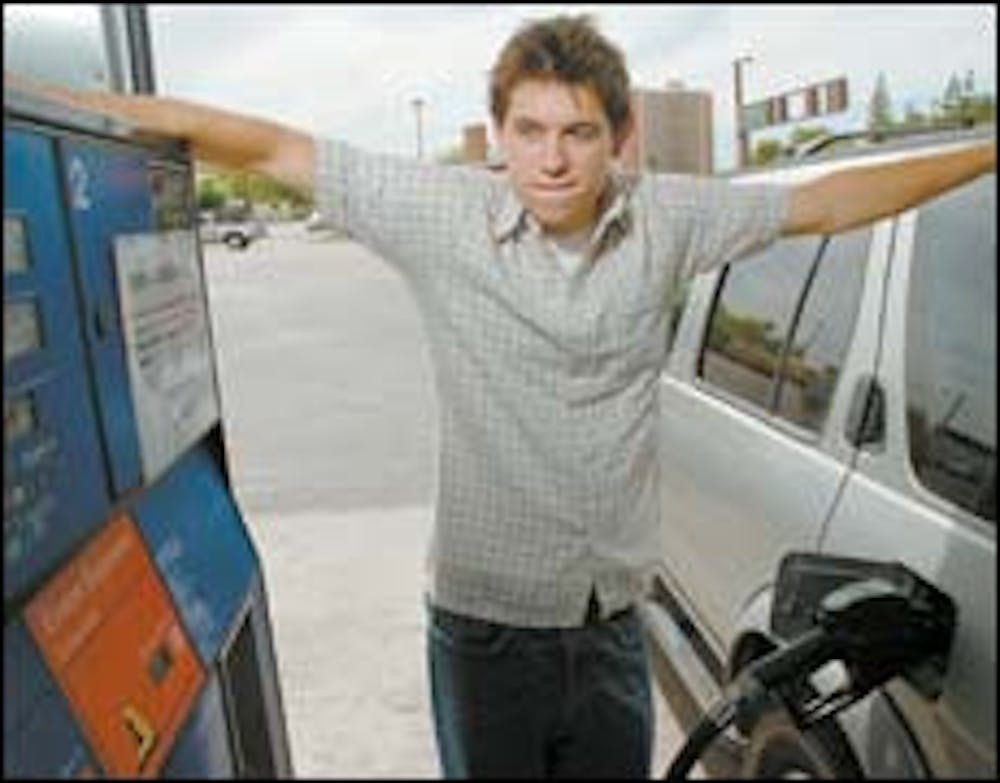Slight drops in gas prices might not bring the relief many ASU pocketbooks are hoping for.
Geology sophomore Megan Brown said she's been doing all she can to cut the cost of gas, including driving less and turning off the air conditioning, but it's still expensive. On top of that, she has a cross-country trip planned to Maryland this summer.
"That's going to be a killer," she said of the trip. "I have a really small car, and the last time I filled up it was like $16, and that is a lot more than I've ever spent."
Brown isn't the only one with this problem. According to a statewide poll taken by KAET-TV and the Walter Cronkite School of Journalism and Mass Communication, about 50 percent of the 415 people questioned reported at least slight changes in the amount they drive due to high gas prices.
AAA spokeswoman Kim Pappas-Miller said little reprieve is in sight with the state average for gas prices up nearly 40 cents from this time last year.
"We're seeing drops on a national level," she said. "[But locally] we have not experienced a significant drop in gas prices."
Pappas-Miller said market analysts are expecting a nationwide average of $2.28 per gallon this summer; currently it is about $2.23.
"Then our prices could be anywhere from 10 to 15 to 20 cents higher than that," she said. "But the thing is, it's a guessing game, nobody knows for sure."
Pappas-Miller said gas prices are dependent on a number of factors, which include the price of crude oil, the stock market and general demand.
Arizonans can also expect to pay more for their gas during the summer because the blend of gas sold here is more costly and also healthier for the environment.
California uses the cleaner-burning fuel throughout the year, which is why it usually has the highest average gas prices in the continental United States, Pappas-Miller said.
Tempe has been using gas prices to its advantage in the past moths with ads for the Tempe in Motion program. The program encourages residents to walk, bike and ride the bus instead of driving, said Sue Taaffe, a spokeswoman for the program.
The record highs haven't prompted any change to the advertisements but have strengthened the points, Taaffe said.
"We've been running some TV spots that talk specifically about the cost of cars and gas," she said.
Psychology sophomore Evan Hufford said the gas prices motivated him to search for different ways to save money.
"I've actually been trying to think of alternatives," said Hufford, who has been reducing his driving but still spends an average of $10 more per week than he would normally. "I might start carpooling with my roommate [to work]."
If that doesn't happen, he said, he's looking into transferring his job to a closer location.
While the students have been hit hard, services at the University haven't felt the effects of high prices just yet.
Robert Coryea, a manager for Fleet Services, the company used to arrange long-distance travel for ASU personnel, said the University has a fuel line, which lowers the price to about $2.06 per gallon.
Reach the reporter at rkost@asu.edu.




